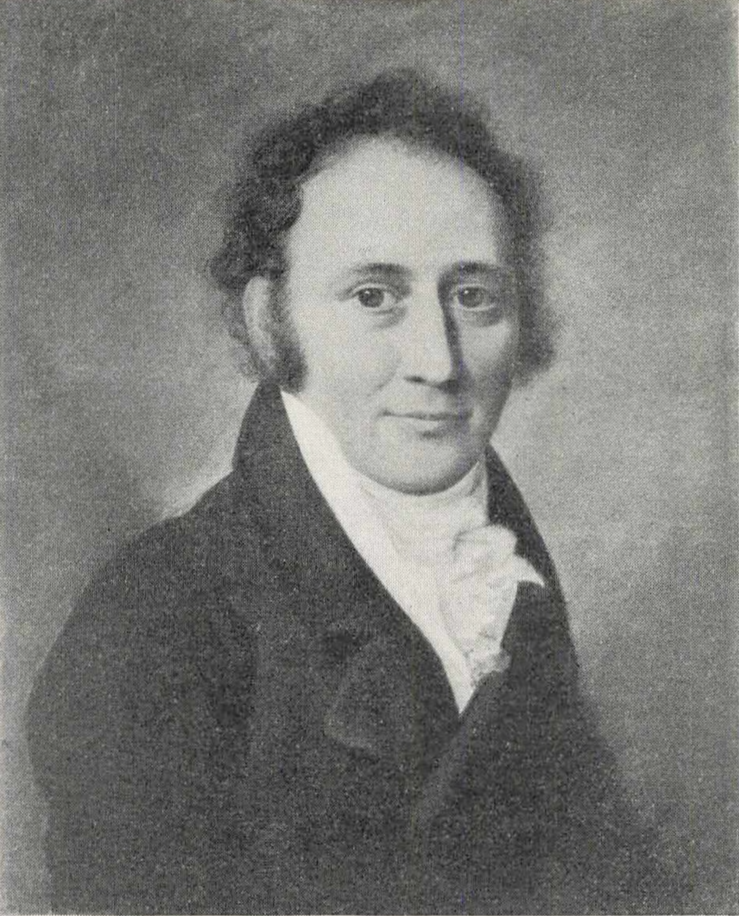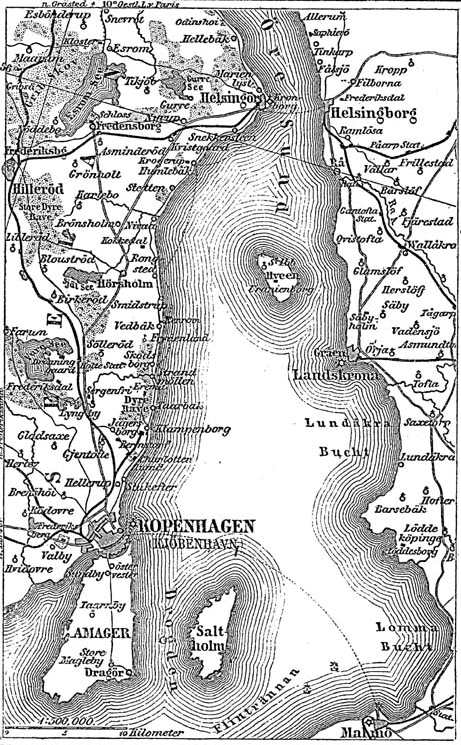|
Classen Mansion
The Classen Mansion (Danish: ''Det Classenske Palæ'') is a Neoclassical manor house situated on Strandgade in Helsingør, Denmark. It was built for a prosperous businessman in the 1790s and now houses the local Odd Fellows Lodge. The house overlooks Helsingør's harbourfront at Wibroes Plads and is flanked by Skibsklarerergaarden to the left and the Stephan Hansen Mansion to the right. History One of Helsingør's largest merchant houses, a four-winged complex with timber framing, was formerly located at the site. In 1785, it was acquired by Jean Jacob Claessen (1752-1806), a wealthy merchant, shipowner and ship handler (''Skibsklarererergaarden''). The property was located next to the trading company headquarters of Jean Christopher van Deurs (1725–1781) of which his father Arent van Deurs had become a partner in 1765. The house was rather neglected and Classen replaced it with the current house in 1791–93. The new house was built under the supervision of architect ... [...More Info...] [...Related Items...] OR: [Wikipedia] [Google] [Baidu] |
Neoclassical Architecture
Neoclassical architecture is an architectural style produced by the Neoclassical movement that began in the mid-18th century in Italy and France. It became one of the most prominent architectural styles in the Western world. The prevailing styles of architecture in most of Europe for the previous two centuries, Renaissance architecture and Baroque architecture, already represented partial revivals of the Classical architecture of ancient Rome and (much less) ancient Greek architecture, but the Neoclassical movement aimed to strip away the excesses of Late Baroque and return to a purer and more authentic classical style, adapted to modern purposes. The development of archaeology and published accurate records of surviving classical buildings was crucial in the emergence of Neoclassical architecture. In many countries, there was an initial wave essentially drawing on Roman architecture, followed, from about the start of the 19th century, by a second wave of Greek Revival archi ... [...More Info...] [...Related Items...] OR: [Wikipedia] [Google] [Baidu] |
Helsingør
Helsingør ( , ; sv, Helsingör), classically known in English as Elsinore ( ), is a city in eastern Denmark. Helsingør Municipality had a population of 62,686 on 1 January 2018. Helsingør and Helsingborg in Sweden together form the northern reaches of the Øresund Region, centered on Copenhagen and Malmö. The HH Ferry route connects Helsingør with Helsingborg, 4 km (2.5 miles) across the Øresund. It is known for its castle Kronborg, which William Shakespeare presumably had in mind for his play '' Hamlet.'' History The name ''Helsingør'' has been believed to be derived from the word ''hals'' meaning "neck" or "narrow strait," referring to the narrowest point of the ''Øresund'' (Øre Sound) between what is now Helsingør and Helsingborg, Sweden. The people were mentioned as ''Helsinger'' (which may mean "the people of the strait") for the first time in King Valdemar the Victorious's '' Liber Census Daniæ'' from 1231 (not to be confused with the Helsings ... [...More Info...] [...Related Items...] OR: [Wikipedia] [Google] [Baidu] |
Denmark
) , song = ( en, "King Christian stood by the lofty mast") , song_type = National and royal anthem , image_map = EU-Denmark.svg , map_caption = , subdivision_type = Sovereign state , subdivision_name = Kingdom of Denmark , established_title = Consolidation , established_date = 8th century , established_title2 = Christianization , established_date2 = 965 , established_title3 = , established_date3 = 5 June 1849 , established_title4 = Faroese home rule , established_date4 = 24 March 1948 , established_title5 = EEC accession , established_date5 = 1 January 1973 , established_title6 = Greenlandic home rule , established_date6 = 1 May 1979 , official_languages = Danish , languages_type = Regional languages , languages_sub = yes , languages = GermanGerman is recognised as a protected minority language in the South Jutland area of Denmark. , demonym = , capital = Copenhagen , largest_city = capital , coordinates = , ethnic_groups = , ethnic_gro ... [...More Info...] [...Related Items...] OR: [Wikipedia] [Google] [Baidu] |
Danish Language
Danish (; , ) is a North Germanic language spoken by about six million people, principally in and around Denmark. Communities of Danish speakers are also found in Greenland, the Faroe Islands, and the northern German region of Southern Schleswig, where it has minority language status. Minor Danish-speaking communities are also found in Norway, Sweden, the United States, Canada, Brazil, and Argentina. Along with the other North Germanic languages, Danish is a descendant of Old Norse, the common language of the Germanic peoples who lived in Scandinavia during the Viking Era. Danish, together with Swedish, derives from the ''East Norse'' dialect group, while the Middle Norwegian language (before the influence of Danish) and Norwegian Bokmål are classified as ''West Norse'' along with Faroese and Icelandic. A more recent classification based on mutual intelligibility separates modern spoken Danish, Norwegian, and Swedish as "mainland (or ''continental'') Scandin ... [...More Info...] [...Related Items...] OR: [Wikipedia] [Google] [Baidu] |
Skibsklarerergaarden
Skibsklarerergaarden, literally "The Ship Handler's House"), is a historic house museum and listed building situated on Strandgade in Helsingør, Denmark. A "ship handler" handled the paperwork at Øresund Custom House for captains in connection with Denmark's collection of Sound Dues from all ships that passed through the Øresund. The Sound Duty was collected on and off between 1429 and 1857 and was one of Denmark's most important sources of income as well as a major cause of local prosperity in Helsingør. The ground floor of the building contains a Ship-chandler with Denmark's oldest surviving shop interior. The building is also known as Rasmussens Gård. History The house dates from the 16th century but was adapted in 1781. Christian Simmelkier opened the Ship-chandler in 1809. The building was acquired by Ove Elling Galschiøt in 1823. Restaurateur Søren Fisker acquired the building in 1993 and the ground floor was subsequently restored by experts from the National M ... [...More Info...] [...Related Items...] OR: [Wikipedia] [Google] [Baidu] |
Stephan Hansen Mansion
The Stephan Hansen Mansion (Danish: Stephen Hansens Palæ) is a listed town mansion overlooking Wibroes Plads and the Øresund in Helsingør, Denmark. It was built by Philip de Lange and represents the transition from Baroque to Rococo architecture. History Hansen and van Deurs families Stephen Hansen acquired an older building at the site in 1756. It was located next to Øresund Custom House. Hansen had taken over the weapons factory in Hellebæk in 1743 and was one of the wealthiest men in the city. Hansen demolished the house in Strandgade in 1759 and commissioned Philip de Lange to build a new house. Lange had already worked for him on Hellebækgård in 1747. To which extent the house was built for his own use or for his daughter and son-in-law is unclear. They had recently been married and Hansen also bought another house where they could live until the new one was completed. Most of his own time was spent at Hellebækgård. The construction of the new house had almost bee ... [...More Info...] [...Related Items...] OR: [Wikipedia] [Google] [Baidu] |
Caspar Frederik Harsdorff
Caspar Frederik (Friedrich) Harsdorff, also known as C.F. Harsdorff, (26 May 1735 – 24 May 1799) was a Danish neoclassical architect considered to have been the leading Danish architect in the late 18th century. Early life and training He was born Caspar Frederik Harsdørffer in Copenhagen, Denmark to German-born schoolteacher Johan Christopher Harsdørffer from Nürnberg and his Swedish-born wife Anne Marie Eriksdatter. He began his education in mathematics in order to train for the Engineer Corps, but his interest lay in architecture, which he studied enthusiastically. When the Royal Danish Academy of Art (''Det Kongelige Danske Kunstakademi'') opened in 1754 at Charlottenborg Palace he was able to study under French architect Nicolas-Henri Jardin. In 1756 his design for a city gate won the Academy’s large gold medallion, giving him the distinction of being the first Danish architect to win the coveted award. The award included a six-year travel grant. Educa ... [...More Info...] [...Related Items...] OR: [Wikipedia] [Google] [Baidu] |
Øresund
Øresund or Öresund (, ; da, Øresund ; sv, Öresund ), commonly known in English as the Sound, is a strait which forms the Danish–Swedish border, separating Zealand (Denmark) from Scania (Sweden). The strait has a length of ; its width varies from to . It is wide at its narrowest point between Helsingør in Denmark and Helsingborg in Sweden. Øresund, along with the Great Belt, the Little Belt and the Kiel Canal, is one of four waterways that connect the Baltic Sea to the Atlantic Ocean via Kattegat, Skagerrak, and the North Sea; this makes it one of the busiest waterways in the world. The Øresund Bridge, between the Danish capital Copenhagen and the Swedish city of Malmö, inaugurated on 1 July 2000, connects a bi-national metropolitan area with close to 4 million inhabitants. The HH Ferry route, between Helsingør, Denmark and Helsingborg, Sweden, in the northern part of Øresund, is one of the world's busiest international ferry routes, with more than 7 ... [...More Info...] [...Related Items...] OR: [Wikipedia] [Google] [Baidu] |
French Revolutionary Wars
The French Revolutionary Wars (french: Guerres de la Révolution française) were a series of sweeping military conflicts lasting from 1792 until 1802 and resulting from the French Revolution. They pitted France against Britain, Austria, Prussia, Russia, and several other monarchies. They are divided in two periods: the War of the First Coalition (1792–97) and the War of the Second Coalition (1798–1802). Initially confined to Europe, the fighting gradually assumed a global dimension. After a decade of constant warfare and aggressive diplomacy, France had conquered territories in the Italian Peninsula, the Low Countries and the Rhineland in Europe and abandoned Louisiana in North America. French success in these conflicts ensured the spread of revolutionary principles over much of Europe. As early as 1791, the other monarchies of Europe looked with outrage at the revolution and its upheavals; and they considered whether they should intervene, either in support of King ... [...More Info...] [...Related Items...] OR: [Wikipedia] [Google] [Baidu] |
Sound Dues
The Sound Dues (or Sound Tolls; da, Øresundstolden) were a toll on the use of the Øresund, or "Sound" strait separating the modern day borders of Denmark and Sweden. The tolls constituted up to two thirds of Denmark's state income in the 16th and 17th centuries. The dues were introduced by King Eric of Pomerania in 1429 and remained in effect until the Copenhagen Convention of 1857 (with the sole exception of Swedish ships between 1660 and 1712). Tolls in the Great Belt had been collected by the Danish Crown at least a century prior to the establishment of the dues by Eric of Pomerania. History All foreign ships passing through the strait, whether ''en route'' to or from Denmark or not, had to stop in Helsingør and pay a toll to the Danish Crown. If a ship refused to stop, cannons in both Helsingør and Helsingborg could open fire and sink it. In 1567, the toll was changed into a 1–2% tax on the cargo value, providing three times more revenue. To keep the captains from und ... [...More Info...] [...Related Items...] OR: [Wikipedia] [Google] [Baidu] |
_-_facade_on_Piazza_dei_signori.jpg)





